-
As of today ICMag has his own Discord server. In this Discord server you can chat, talk with eachother, listen to music, share stories and pictures...and much more. Join now and let's grow together! Join ICMag Discord here! More details in this thread here: here.
You are using an out of date browser. It may not display this or other websites correctly.
You should upgrade or use an alternative browser.
You should upgrade or use an alternative browser.
Hempy vs. Smart Pots vs. Air Pots
- Thread starter mg75
- Start date
Coco Budder
Member
Sure. I would use a 50/50 COCO/Perlite mix myself. But if you feel like watering every couple hours you can do pure perlite.
Yeah it should work, I'd do top-feed drip though, even a blumat won't work in straight perlite since there's no wicking. I love my smartpots, but I use the little 2 gallon ones of soil in e&f trays. Have you done straight hydro before? There's little margin for error, I'd recommend coco in them instead myself. Doesn't need one bit of perlite, worked great straight out of the bag.
yes, you can use 100% perlite... in any container.
water every other day/every day. same as hempy buckets. should be no different w/ 'smart' or 'air' pots. just more oxygen... these are not really new... kbs/freedom gardeners have long used drilled buckets... same concept as 'smart' or 'air pots'...
Freedom Buckets Information here
https://www.icmag.com/ic/showpost.php?p=1296652&postcount=4
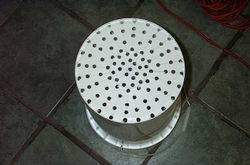

& as to perlite usage... in such a bucket...
SYK's Killer Bucket System (KBS) Suggestion/Discussion Thread
https://www.icmag.com/ic/showpost.php?p=2362161&postcount=18
same principles applicable in store-purchased container... more oxygen in root zone. though can get buckets for free & drill own holes...
member delta9nxs has lots of passive hydro experience w/ perlite... check this thread for data:
passive plant killer
https://www.icmag.com/ic/showthread.php?t=138004
&
Cheap DIY Air Pruning Pots *aka* smart pots
https://www.icmag.com/ic/showthread.php?t=138052&highlight=freedom+buckets
also run 100% perlite in these:
coco+wick+gh flora nova=never dump run-off|pdg’s imaginary/enjoyable garden
https://www.icmag.com/ic/showthread.php?t=127112
...along w/ other side of garden being a coco-based mix. also passive hydro... either w. wicks, or hempy/bato style...
100% pumice also works... if use 100% perlite, try to get chunky. propagation, or smallest size, may get compacted in larger containers (5+ gals). though mixing in pumice, or larger inert rocks helps loosen compaction.
while coco can be used as a fail-safe, 100% perlite works just as well if not better that coco - as long as ph is kept in check. as perlite is inert & is not a ph buffer. coco can be harder to work w/ due to different grades, potential salts already in them & sometimes holding too much water for smaller plants.
perlite is fail-safe in that very hard to ever over water. just keep ph 5.2-6.2 & should be ...
...
many coco growers dont mix in perlite. in imaginary garden, use all sorts of media... from bark to marble chips to sand to perlite to mixtures of them all...
100% perlite or 100% pumice is easiest to mng, & re-usable. cannot blame media for any lock-out, etc... but, make sure ferts are in order...
no need to water every few hours. perlites does hold water & is excellent for capillary action; ieg, water rises up thru media & to roots, from bottom.
many, many kbs/freedom growers subsequently used the 40/60, or 60/40 coco/perlite, or coco/hydroton mix... very, very good water-to-air ratios attained... a few threads on that mix on icmag, if interested, will provide link(s)... most tree grows...
s few of the old freedom gardeners are still lurking around. most seem retired. they may chime in... if growing trees...
enjoy your garden!
water every other day/every day. same as hempy buckets. should be no different w/ 'smart' or 'air' pots. just more oxygen... these are not really new... kbs/freedom gardeners have long used drilled buckets... same concept as 'smart' or 'air pots'...
Freedom Buckets Information here
https://www.icmag.com/ic/showpost.php?p=1296652&postcount=4


& as to perlite usage... in such a bucket...
SYK's Killer Bucket System (KBS) Suggestion/Discussion Thread
https://www.icmag.com/ic/showpost.php?p=2362161&postcount=18
same principles applicable in store-purchased container... more oxygen in root zone. though can get buckets for free & drill own holes...
member delta9nxs has lots of passive hydro experience w/ perlite... check this thread for data:
passive plant killer
https://www.icmag.com/ic/showthread.php?t=138004
&
Cheap DIY Air Pruning Pots *aka* smart pots
https://www.icmag.com/ic/showthread.php?t=138052&highlight=freedom+buckets
also run 100% perlite in these:
coco+wick+gh flora nova=never dump run-off|pdg’s imaginary/enjoyable garden
https://www.icmag.com/ic/showthread.php?t=127112
...along w/ other side of garden being a coco-based mix. also passive hydro... either w. wicks, or hempy/bato style...
100% pumice also works... if use 100% perlite, try to get chunky. propagation, or smallest size, may get compacted in larger containers (5+ gals). though mixing in pumice, or larger inert rocks helps loosen compaction.
while coco can be used as a fail-safe, 100% perlite works just as well if not better that coco - as long as ph is kept in check. as perlite is inert & is not a ph buffer. coco can be harder to work w/ due to different grades, potential salts already in them & sometimes holding too much water for smaller plants.
perlite is fail-safe in that very hard to ever over water. just keep ph 5.2-6.2 & should be
 ...
...many coco growers dont mix in perlite. in imaginary garden, use all sorts of media... from bark to marble chips to sand to perlite to mixtures of them all...
100% perlite or 100% pumice is easiest to mng, & re-usable. cannot blame media for any lock-out, etc... but, make sure ferts are in order...
no need to water every few hours. perlites does hold water & is excellent for capillary action; ieg, water rises up thru media & to roots, from bottom.
many, many kbs/freedom growers subsequently used the 40/60, or 60/40 coco/perlite, or coco/hydroton mix... very, very good water-to-air ratios attained... a few threads on that mix on icmag, if interested, will provide link(s)... most tree grows...
s few of the old freedom gardeners are still lurking around. most seem retired. they may chime in... if growing trees...
enjoy your garden!
yes, you can use 100% perlite... in any container.
water every other day/every day. same as hempy buckets. should be no different w/ 'smart' or 'air' pots. just more oxygen... these are not really new... kbs/freedom gardeners have long used drilled buckets... same concept as 'smart' or 'air pots'...
Freedom Buckets Information here
https://www.icmag.com/ic/showpost.php?p=1296652&postcount=4


& as to perlite usage... in such a bucket...
SYK's Killer Bucket System (KBS) Suggestion/Discussion Thread
https://www.icmag.com/ic/showpost.php?p=2362161&postcount=18
same principles applicable in store-purchased container... more oxygen in root zone. though can get buckets for free & drill own holes...
member delta9nxs has lots of passive hydro experience w/ perlite... check this thread for data:
passive plant killer
https://www.icmag.com/ic/showthread.php?t=138004
&
Cheap DIY Air Pruning Pots *aka* smart pots
https://www.icmag.com/ic/showthread.php?t=138052&highlight=freedom+buckets
also run 100% perlite in these:
coco+wick+gh flora nova=never dump run-off|pdg’s imaginary/enjoyable garden
https://www.icmag.com/ic/showthread.php?t=127112
...along w/ other side of garden being a coco-based mix. also passive hydro... either w. wicks, or hempy/bato style...
100% pumice also works... if use 100% perlite, try to get chunky. propagation, or smallest size, may get compacted in larger containers (5+ gals). though mixing in pumice, or larger inert rocks helps loosen compaction.
while coco can be used as a fail-safe, 100% perlite works just as well if not better that coco - as long as ph is kept in check. as perlite is inert & is not a ph buffer. coco can be harder to work w/ due to different grades, potential salts already in them & sometimes holding too much water for smaller plants.
perlite is fail-safe in that very hard to ever over water. just keep ph 5.2-6.2 & should be...
many coco growers dont mix in perlite. in imaginary garden, use all sorts of media... from bark to marble chips to sand to perlite to mixtures of them all...
100% perlite or 100% pumice is easiest to mng, & re-usable. cannot blame media for any lock-out, etc... but, make sure ferts are in order...
no need to water every few hours. perlites does hold water & is excellent for capillary action; ieg, water rises up thru media & to roots, from bottom.
many, many kbs/freedom growers subsequently used the 40/60, or 60/40 coco/perlite, or coco/hydroton mix... very, very good water-to-air ratios attained... a few threads on that mix on icmag, if interested, will provide link(s)... most tree grows...
s few of the old freedom gardeners are still lurking around. most seem retired. they may chime in... if growing trees...
enjoy your garden!
Great info + links... thanks.
I am running hempy buckets now and some promix filled regular bottom-draining pots. I am just wondering if the air-pruning action on the smart/air pots is better than hempy buckets alone.
Will drilling holes all around (like in the picture you posted)... but 2 inches up so there is a reservoir on the bottom be beneficial?
thanks!
do them side-by-side, in your own garden.
should be evident during season if any differences occur.
the roots do poke out of the holes & can be made to grow into an external res/basin... or air pruned...
dont do the holes for air pruning though... do it for greater gas+vapor exchange w/ environment (garden)... entire room become air stone
enjoy your garden!
should be evident during season if any differences occur.
the roots do poke out of the holes & can be made to grow into an external res/basin... or air pruned...
dont do the holes for air pruning though... do it for greater gas+vapor exchange w/ environment (garden)... entire room become air stone
enjoy your garden!
do them side-by-side, in your own garden.
should be evident during season if any differences occur.
the roots do poke out of the holes & can be made to grow into an external res/basin... or air pruned...
dont do the holes for air pruning though... do it for greater gas+vapor exchange w/ environment (garden)... entire room become air stone
enjoy your garden!
LOL, I was about to ! ... but would love to know if you have, and what hapened *mistress* ... ? I had ideas about different methods of active system delivery you could use to boost the otherwise neglected, air pruned bottom roots from Coco pots. NFT ? DWC ? E&F ? It all could work, hard to see how it could hinder....
bostrom155
Active member
tag
Coco Budder
Member
Mistress is correct. Don't worry about air pruning just use the extra air to "feed" your root system with oxygen and the ladies will love it 
yes.LOL, I was about to ! ... but would love to know if you have, and what hapened *mistress* ... ?
more oxygen content for roots. less stress for roots, w/out use of air pump. basically want good root health...
this is subject w/ lot of scientific data required to be presented+assessed...I had ideas about different methods of active system delivery you could use to boost the otherwise neglected, air pruned bottom roots from Coco pots. NFT ? DWC ? E&F ? It all could work, hard to see how it could hinder....
has more variables than just 'air pruning roots', whatever that is purported to do...
some basics of plant-roots physiology...
basic function of roots is to anchor plant. second function is to absorb water & minerals from solution/media.
primary roots. branches from this are secondary, or diffuse roots. any additional roots other than primary or branches therefrom, are adventitious roots. adventitious roots are those produced when gardener take cuttings from a mum/pop plant.
the tip of ea root is covered by protective root cap. this root cap is constantly worn away & replaced by actively growing meristematic cells. much like fingernails on humans, and hooves on horses... or skin cells on humans, which eventually makes majority of dust in avg home. zone of elongation is behind growing tip/cap of root; & take in +amounts of water...
growing tip 1mm... elongation zone 3-5mm.
zone of maturation are the white root hairs that are root porn in the pics... these are the permanent, & laterally growing from single epidermal cell.
any epidermal cell may absorb substances, but root hairs have greater surface area to absorb w/... they are formed behind zone of elongation, live briefly & perish as the root elongates...
hundreds of root hairs exist on ea mm^2 of root surface. inside the epidermis is the cortex; thin-walled spherical cells w/ spaces. this is where conduction of water & minerals (cation exchange) occurs & where starches & other foodstuffs for the plant are stored...
the endodermis @ inner edge of cortex... is separator from central vascular tissue, the stele.
roots get thick, waxy & lignified when old (these are those thick air roots that often form @ top, when top dress w/ perlite, etc). yet, there are still passage cells which permit water+minerals thru... inside endodermis, pericycle; which can be transformed into meristem & then to cambium & more lateral roots...
stele is composed of central core of vascular tissue. xylem conducts water... phloem have sieve tubes, thinner than xylem. they divide & make root thicker. when grow big plants, can develop lots cambium in roots. usually seen @ top, next to stem & bulging out like knots of rope.
the water is thin film of collidial surfaces of media/pure solution (dwc/aero)... this is capillary water. to get thru the hypertonic barrier (when roots contain more sugars/dissolved solids than solution), gardeners increase the ppms so that solution of high concentration can permeate to area of lower concentration. same w/ water... water passes thru plasma membrane of root hairs by process of osmosis.
the plasma membrane is permeable to water but not to glucose & other organic compounds in the cell sap...
the removal of water from the stele via the xylem keeps the concentration gradient of water from epidermis to xylem & lets the continued inflow of water.
the water entering the xylem vessels increases the osmotic pressure. this root pressure is one factor (there are others, most importantly, temperature) that moves sap upwards thru root & stem & up to leaves... same water (in vapor form) that is fed thru roots is constantly escaping. this is transpiration. transpiration does occur @ night... more on this in a little...
the mineral nutrients, or inorganic salts are absorbed thru diffusion. an ion present in greater concentration than inside of root cell sap, will tend to diffuse into cell. this is largely independent of water absorption. also, the absorption of ea ion is independent of all others. ea diffuses down to its own concentration gradient. good to keep ph in range, or drifting constantly. also good to maintain balanced, full strength solution to overcome ever-increasing internal cell sap of plant. as plant gets older, more & more sugars, starches & minerals are stored in root cell sap. this is basically a higher ec & why increasing ec to get nutes thru hypertonic barrier may be
 ...
...alternatively, if flushing intermediately, the cell sap will not concentrate to point where lower ec/ppms wont be able to diffuse thru greater internal ec...
the rate of entry of ea ion is determined by the difference of the concentration levels of that particular ion, in/out of root hairs. also, diameter of the ion in its hydrated form is factor in penetration. get the quality water soluble ferts, whether ultra-conservative oraganic or chem, or both! if the ionic compound isnt soluble enough, wont get thru...
plants can also absorb nutrients against a concentration gradient... this can be triggered by greater cellular metabolism. usually, higher temps increases metabolism... maybe posted higher temps in other posts
 ... when large #'s of sap flows thru roots to leaf & other plant parts, more quickly can be drawn up... this relates to transpiration...
... when large #'s of sap flows thru roots to leaf & other plant parts, more quickly can be drawn up... this relates to transpiration... transpiration...
leaves continuosly lose moisture thru evaporation unless air is saturated w/ water, or 100% rh/low vapor pressure deficit... this loss of water may occur on all parts of the plant that is exposed to air (another reason to keep air flow 24/7...). usually occurs thru stomata though, during day (lights on). lower temps & usually closed stomata @ night reduce transpiration. stomata also tend to close during mid-day, or hottest part of day, to conserve water. if adequate water is supplied... the stomata remain open & continue transpiring...
only 1-2% of the water absorbed is used in photosynthesis.
all the rest of the water passes thru the plant stomata as water vapor during transpiration... why *mistress* has hinted @ these points in a few posts
during sunlight, an avg plant will transpire ~50ml (~>2oz) of water per m^2 of leaf surface per hour... why *mistress* inquires about actual amount of water given vs. actual amount of water dehumidified. if not noting both, or if not actively exchanging air, plant cannot physically uptake & expel water @ fastest rate possible...
transpiration moves water upward (keep rh in check or external pressures slow this process down). this movement concentrates dilute minerals in stem & leaves. plants absorb 75% of light reaching it, but only assimilates 3% as usable energy. rest is converted into heat, which must be removed from leaf... transpiration assists in this process, by evaporating heat held in leaf.
requires 540 calories to convert liter of water to water vapor... can convert calories to millimhos & thus ppms to determine exact kilocalorie diet required by plant. different way of saying constant 1 ec, 1000 ppms required for plant thru harvest... etc, etc... will convert 540 cals to ec/ppm if desired...
during transpiration then, continuous stream of water passes thru root system to xylem, thru stem & petiole, thru the veins on the leaf, to mesophyll cells next to air pores on leaf, where they are vaporized...
 the return circulation system distributes energy to plant & returns sugars to be stored in roots...
the return circulation system distributes energy to plant & returns sugars to be stored in roots...see this thread for details on rh. posted in previous incarnation
RH importance
an avg media for optimum plant might consist of:
45% mineral matter
5% organic matter
25% water space
25% air space
total inorganic nutrients in final plant weight ~1-4%...
plants are ~45% oxygen in dry matter. they also desire 20% oxygen in the atmosphere... plants need fresh oxygen in the dark because their leaves dont create it @ night... plants regulate use of oxygen by temperature... as ea 18*f increase in air temp doubles respiration rate.
air temp is the main environmental factor influencing veg growth, flowerin intiation, fruit growth & ultimately fruit quality. the higher the avg 24 hr temp, the faster the growth rate...
air movement which causes plants to move slightly, or air speed of ~.5 m/sec is
 . continuously... as it is primary force which removes moisture from air, which plants continually give off in vapor form...
. continuously... as it is primary force which removes moisture from air, which plants continually give off in vapor form...so, while the 'air' or 'smart' pot, etc, etc, etc, ad infinitum may claim to do this/that relevant to 'root pruning', the actual process is far more complex & if the adjacent factors are not also controlled, is pointless to just 'root prune'. roots prune themselves because they are like fingernails, pushing thru the media.
providing oxygen, water & ph-balanced nutes would seem to foster root environment that helps them do what they are hard-wired to do. additional oxygen & slightly warmer root temps will also help this process...
hope this helps.
enjoy your garden!
*m* it helps, thanks ... but does not solve... 
I ran some large outdoor plants with a bubble cage in the middle of the pots 2 summers ago, but saw no great advantage, however I was very naughty and ran no control experiments ... then I saw how some cuttings grew very well with accidental air spaces in the rootzone and "bare" water at the bottom... so was having ideas about runing Coco pots with some kind of active feed supply to the lower half of the pot. As you say, the RH, Oxygen supply and Temp down there is crucial and often overlooked and running something like this would hopefully add to the control you have over this zone due to the practical implementation.
I also have a friend bending my ear about the possibilities of good bacteria and wet/dry cycles, how ebb and flow areas tend to be very healthy, how shorelines are the richest areas in a sea, that DWC can be improved by cycling solution height, exposing sunken areas to fresh oxygen, drawing in fresh with the cycling.
I ran some large outdoor plants with a bubble cage in the middle of the pots 2 summers ago, but saw no great advantage, however I was very naughty and ran no control experiments ... then I saw how some cuttings grew very well with accidental air spaces in the rootzone and "bare" water at the bottom... so was having ideas about runing Coco pots with some kind of active feed supply to the lower half of the pot. As you say, the RH, Oxygen supply and Temp down there is crucial and often overlooked and running something like this would hopefully add to the control you have over this zone due to the practical implementation.
I also have a friend bending my ear about the possibilities of good bacteria and wet/dry cycles, how ebb and flow areas tend to be very healthy, how shorelines are the richest areas in a sea, that DWC can be improved by cycling solution height, exposing sunken areas to fresh oxygen, drawing in fresh with the cycling.
yeah id say hempy with a powerful air diffuser at the bottom would provide some pretty crazy growth, cant seem to find any grows like that....
links any1? hah
links any1? hah
?Smart Pots and Air Pots are typically soil. Hempies are hydroponic.
Apples vs. Oranges, but I'd say go with the hempies.. hydroponics tend to have higher growth rates.
any type of medium can be used in an aerated container.
soil, soilless mix, or perlite-perlite/vermiculite-coco-coco/perlite, etc, etc...
any container w/ a hole ~1-2" above the bottom, filled w/ any soilless media, is a basic Hempy-Bucket...
any container that permits aeration thru the side walls seems to be an 'a!r' p0t...
a 5 gal bucket w/ multiple holes drilled onto the sides & filled w/ perlite/vermic, is a air container/p0t...
a 5 gal bucket w/ 1 hole on the side is a hempy bucket... as long as media is soilless...
what media they are filled w/ has nothing to do w/ the method.
can use 100% perlite w/ an aerated container... or 100% soil.
400W HPS Scrog - 1Plant - 450gr Harvestturbolaser4528 said:yeah id say hempy with a powerful air diffuser at the bottom would provide some pretty crazy growth, cant seem to find any grows like that....
links any1? hah
https://www.icmag.com/ic/showpost.php?p=182054&postcount=1
Mistress has a lot of good points 
I'll add in my 2 cents here ... as an experienced 100 % perlite grower.
I've done hempy 100 % perlite, 70 % perlite 30 % vermiculite or 50/50
I have found that if you use a drip system with 100 % perlite, you're going to be amaze the grow rate from the plant. This is something new to me, i made a single unit for this test and i was blown away. I believe perlite/drip system is the future.
These are grown in all perlite, the plant could've been in a lot better condition, the system is not to blame but the grower here ( you can see burns and bad ph ) mistake from a brand new grower, yet the plant still finish nicely, like i said could've been a lot better


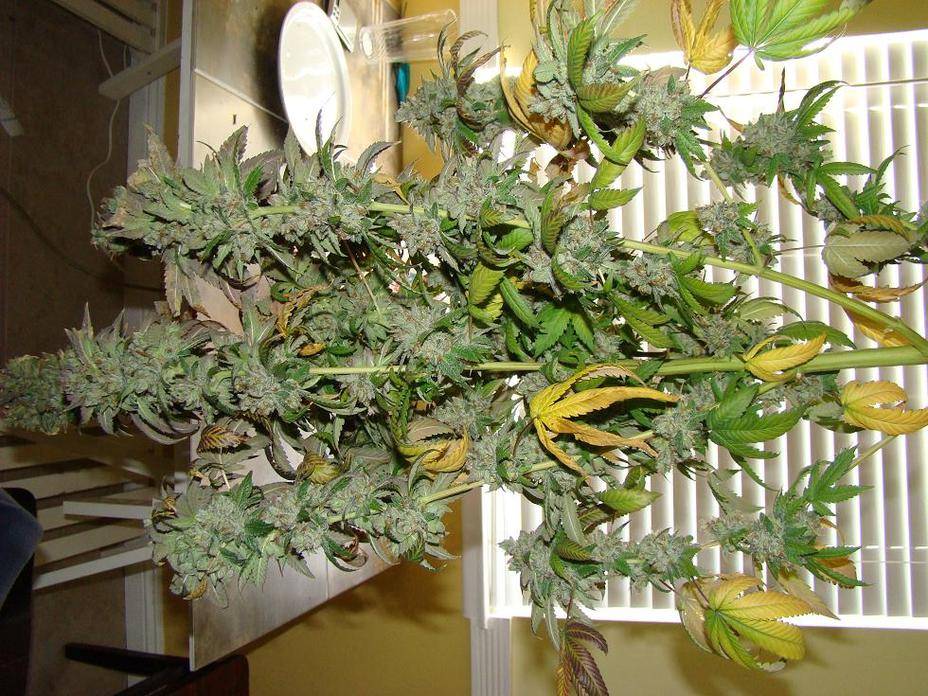
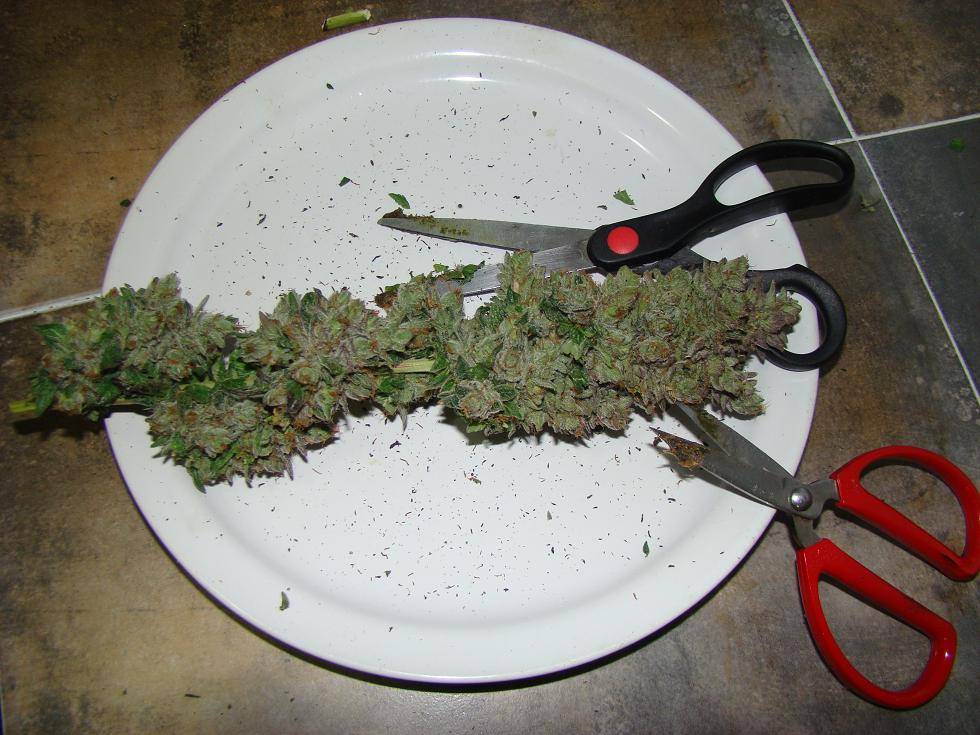
And these GK are grow in all perlite, we'll see the finish products in 8 or 9 weeks
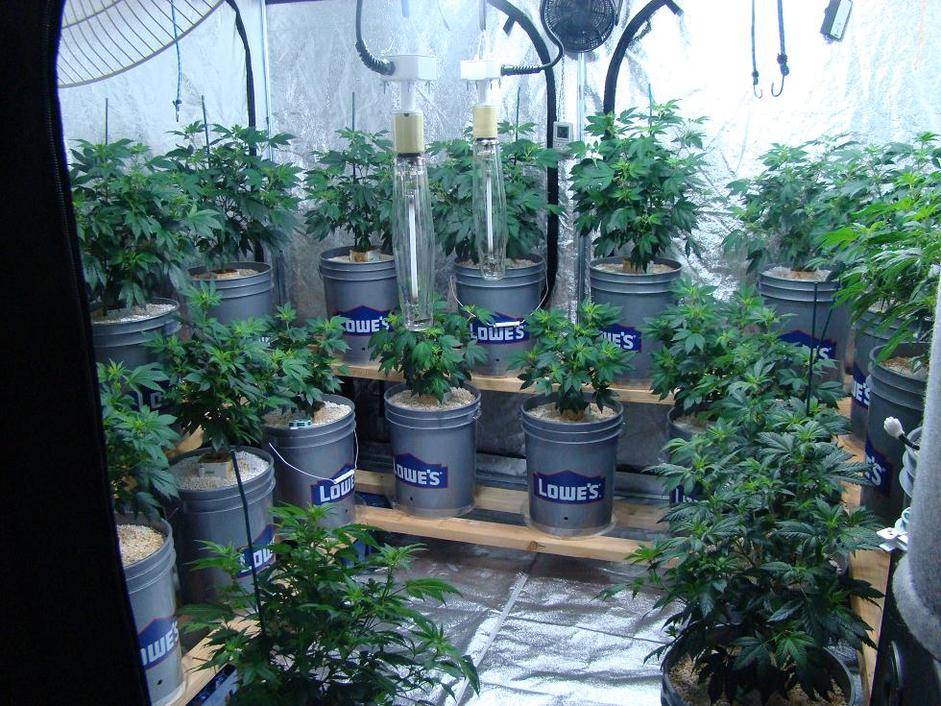
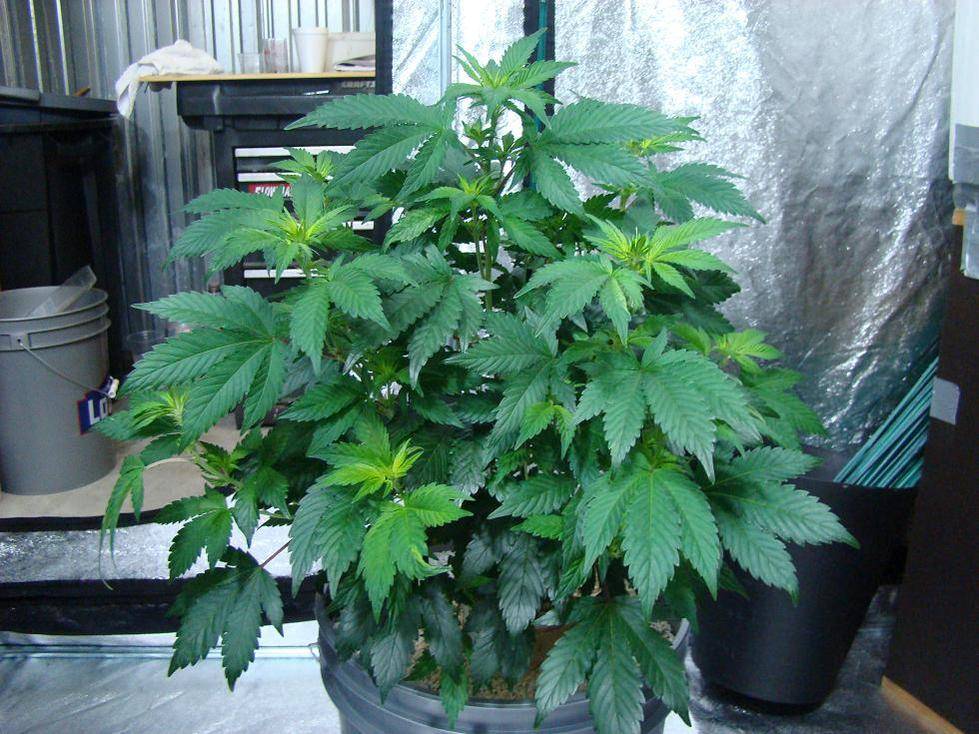
Ok i've done my hempy, now some one throw up smart pots and air pots
cheers,
red.
I'll add in my 2 cents here ... as an experienced 100 % perlite grower.
I've done hempy 100 % perlite, 70 % perlite 30 % vermiculite or 50/50
I have found that if you use a drip system with 100 % perlite, you're going to be amaze the grow rate from the plant. This is something new to me, i made a single unit for this test and i was blown away. I believe perlite/drip system is the future.
These are grown in all perlite, the plant could've been in a lot better condition, the system is not to blame but the grower here ( you can see burns and bad ph ) mistake from a brand new grower, yet the plant still finish nicely, like i said could've been a lot better
And these GK are grow in all perlite, we'll see the finish products in 8 or 9 weeks
Ok i've done my hempy, now some one throw up smart pots and air pots
cheers,
red.
nice setup redspaghetti, i like the lowes hempy buckets, doin the same thing myself lol
im curious as to why you recommend 100% perlite over coco with 3" of perlite at the bottom like traditional hempy's?
is it because there's more oxygen in the root zone?
how often would you drip in coco hempy's, once per day? and for perlite?
O and thnx for the link mistress, thats what im talkin about!!!!!! do you think coco with perlite at the bottom would be best for this or something more airy like perlite, etc?
im curious as to why you recommend 100% perlite over coco with 3" of perlite at the bottom like traditional hempy's?
is it because there's more oxygen in the root zone?
how often would you drip in coco hempy's, once per day? and for perlite?
O and thnx for the link mistress, thats what im talkin about!!!!!! do you think coco with perlite at the bottom would be best for this or something more airy like perlite, etc?
phattybudz
Member
Probably wouldn't have any problem transplanting a 1.5 gallon coco or other soilless into one of those perlite drips huh? Looks nice...Thanks for the ideas!
LOL. That looks exactly like a California Dream from my last grow. Ugly as hell (thanks to me), but smokes great...

Latest posts
-
-
-
Do you even OGKB 2.0 Bro??? Let them eat Cookies!
- Latest: flower~power
Latest posts
-
-
-
Do you even OGKB 2.0 Bro??? Let them eat Cookies!
- Latest: flower~power


